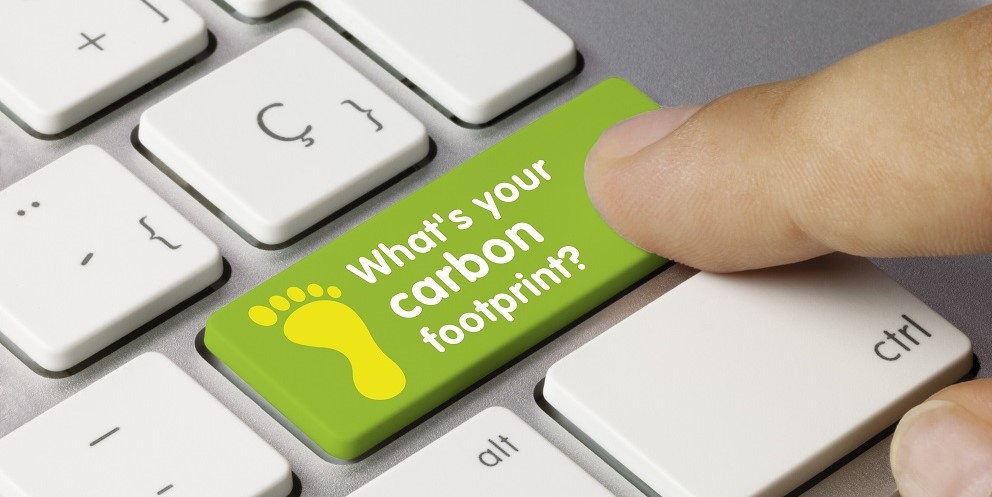What do you need for a CO₂‑footprint?
Annual measurement and reporting of the CO₂ footprint for scope 1 and 2 are now a must for all companies. With the Envirometer, you have all the necessary tools and corresponding CO₂ emission factors at hand. On this page, we provide everything you need to know.

Steps for CO₂ footprint scope 1 & 2
Scope 1 and 2 emissions are easy to measure. These are exact numbers that you should be able to extract relatively easily from your accounting. Up-to-date CO₂ factors are readily available in the Envirometer.
- Monitor at least your own direct emissions from your own buildings, work processes and transport (scope 1) and indirect emissions from external energy generation (scope 2). See an overview in the tables below.
- Collect the (energy) data via invoices, expense claims, fuel cards and other registrations of the (fuel related) activities. The first time, it can be quite a time-intensive chore to find the source data. If you make detailed notes in the Envirometer of your sources and/or calculations, this will make updates in subsequent years easier.
- Include scope 3 elements where you as a company have a lot of influence (e.g. business travel). See third table. If the carbon footprint is in order, you can always expand later with more scope 3 themes.
- Read the results in the Envirometer via the CO₂‑table, CO₂‑graph and key figures. Set reduction targets and visualize them in the graph.
Required data for CO₂‑footprint
Scope 1 – direct emissions
| Category | Theme in the Envirometer | Activity | Source of data |
|---|---|---|---|
| Fuels for heating and production | Fuels & heat | Natural gas (m³) for heating and production | Energy bill |
| Other fuels for direct use (e.g., diesel, propane, bio-oil) | Bills of supplied fuels | ||
| Fuels for owned vehicles | Business traffic | Machinery | Invoices of fuels and fuel cards |
| Passenger transport | Invoices of fuels and fuel cards | ||
| Freight transport | Invoices of fuels and fuel cards | ||
| Other direct GHG emissions | Emissions | Emissions (kg) of refrigerant leakages in cooling | Refilling according to service invoice mechanic |
| Emissions (kg) of solvents with painting, spraying, printing | Volatile Organic Compounds registration (VOC/VOS) | ||
| Other relevant direct emissions of GHGs (kg) | Sector-specific, own registration GHGs |
Scope 2 – indirect emissions from external energy production
| Category | Theme in the Envirometer | Activity | Source of data |
|---|---|---|---|
| Electricity from buildings | Electricity | Purchased electricity | Energy bill |
| Electricity project locations | Project invoices | ||
| Heat from external | Fuels & heat | Heat from external ATES (average power) | Energy bill |
| Cold from external | Fuels & heat | Cold from external ATES (average power) | Energy bill |
| Electricity for traffic | Business traffic | Electricity for charging electrical company vehicles | nvoice of fuel cards / charging cards lease company |
| Mobile machinery | |||
| Commuter traffic | |||
| Freight transport |
The GHG Protocol’s delineation of scope (1 and) 2 is rather strict. From our perspective as sustainability advisors, we recommend including a few emission categories that are easily measured, but officially part of scope 3. See the following table.
Scope 3: other indirect emissions in the value chain (selected items)
| Relevant for | Category | TTheme in the Envirometer | Activity | Source of data |
|---|---|---|---|---|
| Manufacturing and trading companies | Upstream transportation and distribution (3-4) | Freight transport | Outsourced transport; road, shipping, rail and air (ton km) | Increasingly, transportation service providers make this data available |
| Organizations larger than 100 FTE | Employee commuting (3-7) | Commuter traffic | Commute traffic ritten of diverse vehicles (km) | Mileage reimbursements or questionnaire |
| All branches | Business travel (3-6) | Business traffic | Declared km private car | Claim-registration |
| Public transport and aeroplane (km) | Annual total statement from the transport company |
Annual measuring and reporting of the CO₂ footprint of scope 1 and 2 is now a must for all companies. By measuring and reporting, you become aware of emission reduction possibilities, while making clients / customers aware of your actions.
The Envirometer uses the official Dutch CO₂ emission factors from www.CO₂emissiefactoren.nl
Get started with the Envirometer
Want to get started immediately? No problem! Take out a subscription today and get started by filling in your details.
